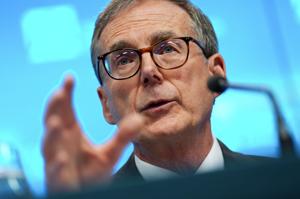
Inflation, it seems, has finally been defeated. And the Bank of Canada appears ready to take all the credit. “Monetary policy has worked to reduce price pressures in the Canadian economy,” the bank stated, again, in its Monetary Policy Report released on Wednesday, the same day that bank governor Tiff Macklem announced a 50 basis point cut to its key interest rate.
The evidence, however, suggests that price stability was not restored by tight monetary policy. Following conventional economic theory, the bank hiked interest rates to reduce demand that would eventually translate into higher unemployment and lower wage-increases. The bank’s declared war on inflation actually implied an undeclared war on workers.
For this to happen, however, many economists believe sufficient time must elapse, usually 12 to 18 months. But the bank initiated its tightening cycle in March 2022 — just three months before inflation peaked at 8.1 per cent in June of that year.
Since then, inflation has been on a downward path. In other words, inflation started to fall when the bank’s key rate — on its way to five per cent a year later — was only 1.5 per cent.
So, if the bank were actually responsible for defeating inflation, conventional monetary theory should be rewritten. U.S.
economist James K. Galbraith put it best: “Causes must precede effects. A cause that has not happened cannot be credited with an effect that already has.
” So, higher interest rates cannot explain a decline in inflation that had already occurred. Rather, inflation seems to have subsided due to a fading of the same factors that sparked it: temporary commodity-price hikes, pandemic-induced supply-chain bottlenecks, and corporations’ exploitation of market power in an environment of price increases. And while the bank takes undeserved credit for thwarting inflation, it does not seem ready to concede defeat in its undeclared war on workers.
“Wage growth remains elevated relative to productivity growth,” the bank acknowledges again in its latest Monetary Policy Report. But, once again, immediately softens this statement by adding that the “cooling labour market is anticipated to slow wage growth over time.” High interest rates did cause the economy to slow down and unemployment to rise from 4.
9 per cent in June 2022 to 6.5 per cent last month leaving some 400,000 more workers without a job. Although this represents an unfair and unnecessary cost to workers, it has not been enough to halt an increase in real wages.
Indeed, average real wages are today slightly higher than when inflation started to surge in early 2021 — and they’re still rising without causing a new burst of inflation. Actually, to date, nominal wages have risen 3.3 per cent in 2024 while prices have gone up only 1.
8 per cent, so real wages have jumped 1.5 per cent in the first nine months of 2024. So why is the bank losing its undeclared war on workers? , “the real rate of interest must be positive — and significantly so — to cause a recession deep enough to make workers accept a decrease in real wages.
” And although positive, the real rate of interest — the difference between the nominal rate and inflation — was 2.65 per cent last month, and only 1.7 per cent when the policy rate was raised to five per cent in July 2023.
This positive real rate did cause a significant spike in unemployment, but not enough to force workers to accept slashed wages. It’s worth remembering that when the bank beat spells of high inflation in the last quarter of the 20 century, the real rate of interest was raised to more than eight per cent causing deep recessions in the early 1980s and early 1990s. This time round, inflation was not caused by excess demand or wage increases, and so it started to decline before interest rates were raised high enough to cause a recession.
So, contrary to the view of many economists and financial analysts, the bank was not behind the curve when inflation surged in 2021 since — after all — inflation was transitory even if prolonged, as the evidence now shows. But pressure on the Bank of Canada was too strong and it eventually caved to the financial sector raising interest rates rapidly to save credibility. Now that inflation is over, the bank is clearly behind the curve in its bid to keep the economy close to full employment — hence Wednesday’s rate cut announcement.
And once again, following the financial sector’s expectations, the bank will continue to cut its policy rate faster in a bid to save face. In any case, Wednesday’s news should be cause for celebration for most Canadians: inflation is low, real wages are rising, interest rates are falling which gives tens of thousands of homeowners a break, and a perfect scenario arises for businesses to finally undertake productivity-enhancing investments. It’s time to pop open the champagne!.














